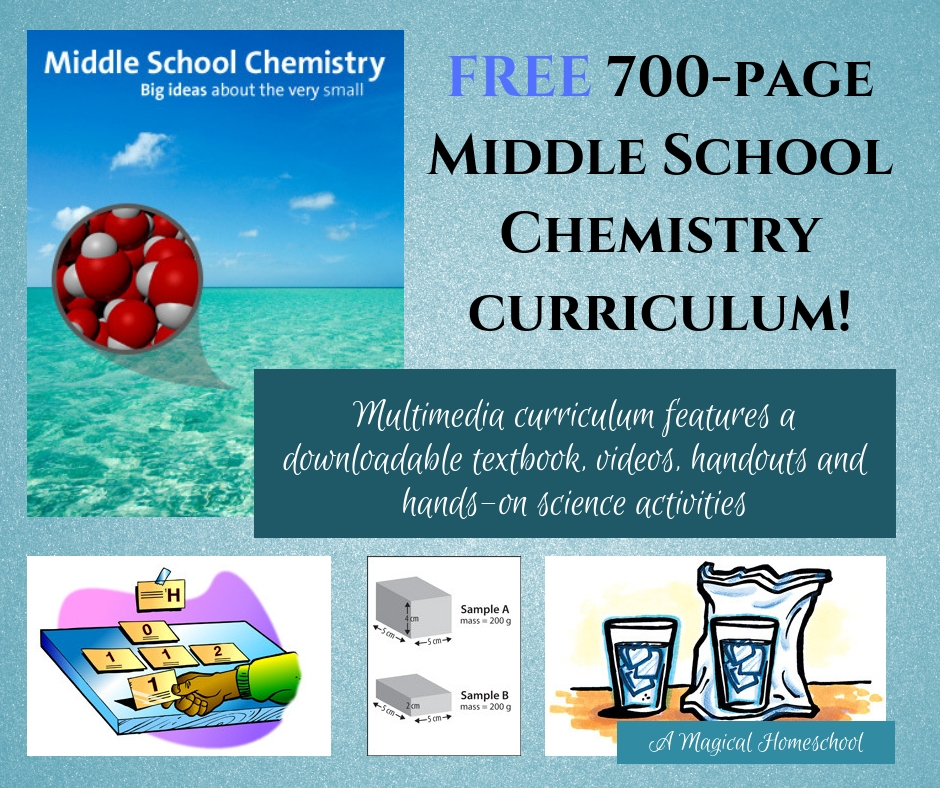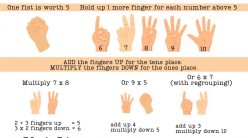
Looking for a comprehensive chemistry course for the middle school level? The American Chemical Society provides their entire 691-page curriculum for free as a PDF download or online resource.

Middle School Chemistry: Big Ideas About the Very Small is designed to be an 8-10 week course, with each lesson requiring about 45 minutes to one hour.
The ACS says:
Investigate the world of atoms and molecules through hands-on inquiry-based activities and molecular model animations.
The curriculum includes plenty of lab work, most of which involves materials that are easy to locate. Parents may wish to skip a few lessons that require hard-to-locate or more expensive items. You can view the materials list here.
Chapters include:
Chapter 1: Matter—Solids, Liquids, and Gases
Students are introduced to the idea that matter is composed of atoms and molecules that are attracted to each other and in constant motion. Students explore the attractions and motion of atoms and molecules as they experiment with and observe the heating and cooling of a solid, liquid, and gas.
Students help design experiments to test whether the temperature of water affects the rate of evaporation and whether the temperature of water vapor affects the rate of condensation. Students also look in more detail at the water molecule to help explain the state changes of water.
Students experiment with objects that have the same volume but different mass and other objects that have the same mass but different volume to develop a meaning of density. Students also experiment with density in the context of sinking and floating and look at substances on the molecular level to discover why one substance is more or less dense than another.
Chapter 4: The Periodic Table & Bonding
Students look more deeply into the structure of the atom and play a game to better understand the relationship between protons, neutrons, electrons, and energy levels in atoms and their location in the periodic table. Students will also explore covalent and ionic bonding.
Chapter 5: The Water Molecule and Dissolving
Students investigate the polarity of the water molecule and design tests to compare water to less polar liquids for evaporation rate, surface tension, and ability to dissolve certain substances. Students also discover that dissolving applies to solids, liquids, and gases.
Students explore the concept that chemical reactions involve the breaking of certain bonds between atoms in the reactants, and the rearrangement and rebonding of these atoms to make the products. Students also design tests to investigate how the amount of products and the rate of the reaction can be changed. Students will also explore endothermic and exothermic reactions.
Lessons also include printable activity pages, video clips and more to enhance the curriculum.




